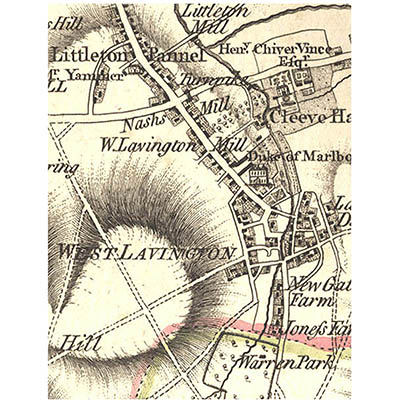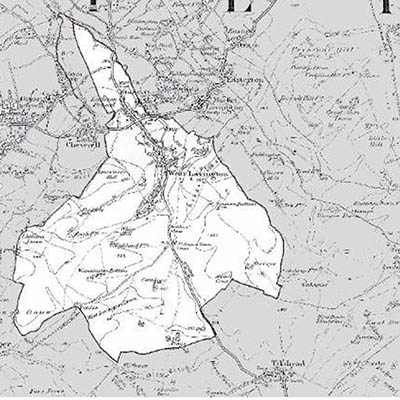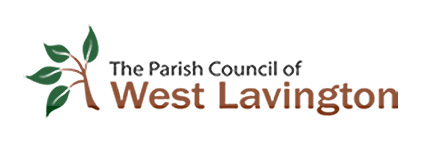HERITAGE
Our aim is to promote a better quality of life for everyone living within the parish.
We aim to strengthen our community through active participation and by encouraging a
sense of belonging and inclusion in the day-to-day life of our villages.
Local Heritage


Early Origins
Domesday Book
Bishiop’s Lavington
The Manor
‘The garden at Lavington is full of irregularities, both naturall and artificiall, sc. elevations and depressions. Through the length of it there runneth a fine cleare trowt stream; walled with brick on each side, to hinder the earth from mouldring down. In this stream are placed severall statues. At the west end is an admirable place for a grotto, where the great arch is, over which now is the market roade. Among severall others, there is a very pleasant elevation on the south side of the garden, which steales, arising almost insensibly, that is, before one is aware, and gives you a view over the spatious corn-fields there, and so to East [Market] Lavington: where, being landed on a fine levell, letteth you descend again with the like easinesse; each side is flanqued with laurels. It is almost impossible to describe this garden, it is so full of variety and unevenesse; nay, it would be a difficult matter for a good artist to make a draught of it.’
Fire, Fire!
On Friday 26 April 1689 there was a disastrous fire in the village with 226 bays of buildings burned. A bay was normally the area between two sets of crucks or wooden fames that provided support for an upper floor, roof and the timber framing of the front and rear walls. The buildings represented by the number of bays would have been houses, barns, stables and other outbuildings. The number of people who lost buildings was 26 but this probably represented more houses as several would have been tenanted. For example Thomas Baxter, ‘his losses in houses consisting of 31 bays or building we prise at £450.’ This may have represented between six and twelve buildings. The parsonage house with barns, stables, etc. comprised 29 bays and was valued at £615. Altogether 34 people suffered losses in trade and household goods. These totalled £1608.18.8d and varied between £5 of the widow Alice Chilvester and £445 for William Bartlett. From this it would seem that 34 households were lost.

This photo shows Fire hooks for removing thatch from roofs. Seven men wielded each hook, with ropes attached to the shafts for pulling down the roof covering to create a fire break. These hooks are now on permanent open display at Hook Court, High Street, West Lavington.
The only houses remaining in West Lavington today that pre-date the fire are the Old Manor House, West Lavington Manor and the Old House in Duck Street. There are several late 17th and early 18th century houses, including Dial House of 1691 that must have been built to replace those lost in the fire. There appear to be indications of more earlier houses in Littleton Panell so it seems likely that the fire was concentrated in the area around the church of All Saints.
18th & 19th Centuries
In the 18th century it was noted that there was much flint digging in the parish for the repair of turnpike roads. Sheep remained pre-eminent and in 1766 there were 6,298 in the parish. The West Lavington estate was bought by the Duke of Marlborough in 1766, hence the Churchill Arms in the village today. By 1801 the main crops from arable land were wheat and barley, with some oats, peas, rape, turnips, beans and rye. Market gardening flourished in the 19th century and produce was sent to Salisbury and Bath. Chalk was quarried for lime burning. 1825 saw riotous celebrations in the village when toll gates on the turnpike roads were burned down and never replaced.
In 1867 there was still a good range of businesses in both villages. The variety of shops included two grocers (one was also a farmer and one a draper), a baker and grocer, a butcher, three shopkeepers (one of whom was also a blacksmith and his wife ran the post office), while there were four public houses; the Black Dog and the Churchill Arms, with the Wheatsheaf and the Cross Keys in Littleton. Market gardening was represented by six gardeners (one was also a carrier) making use of the rich loamy soil above the greensand. There was a beer retailer, who was also a maltster, and four millers. There was another blacksmith, a saddler, two carpenters and wheelwrights, a stonemason, two bricklayers, a building and timber merchant and carpenter. Clothes were provided by two tailors and a stay maker and there were three boot and shoe makers. The parish contained ten farmers and a dairy.
20th Century
In 1900 the railway line between Westbury and Stert was built across the northern part of the parish and West Lavington station was sited half a mile to the north of Littleton. The licence from the Black Dog was used for the new railway hotel. The manor house at Littleton, à Becketts, was rebuilt in red brick in 1904 and little trace of the original remains. In 1905 Lord Churchill sold the manor of West Lavington and much of the land to Mr. H T Holloway. Between 1910 and 1936 the War Department acquired 4,203 acres in the parish, being the downs in the southern part.
The 20th century saw the substantial expansion of Dauntsey’s School from 1919 onwards and the buildings and grounds now comprise 100 acres in and around both villages. There have been small housing developments from the 1970s and the two villages have grown together.
The Turnip Hoer’s Song
The Turnip Hoer’s Song. Fred Perrier & Villagers From West Lavington, Wiltshire. Traditional country music, filmed in 1950.
More Information
A much more detailed history of the area, published in 1953, and taken from Victoria County History’s publication “A History of the County of Wiltshire, Vol. 7” is available as a document below. Click here for online access from British History Online, and to note the historical significance of its original publication.
If you would like to learn more about family history, you may wish to explore the Wiltshire Family History Society website here.
For a full list of Listed Buildings in the parish, click here. You can also search the English Heritage website here for Listed Buildings and Scheduled Monuments.
If you would like to read more about the history of West Lavington in Wiltshire, go to our Download Library.

